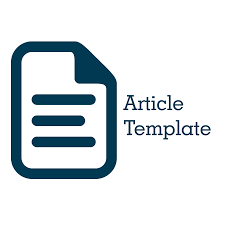Disorders of written speech in primary school students
Abstract
Written speech disorders in students may stem not only from external factors but also from alterations in brain function. The article explores the most prevalent problems in students' written speech, including spelling mistakes, syntactic errors, methodological inaccuracies, and logical flaws. It further emphasizes that such disorders can be associated with neurological changes in the brain, such as challenges with attention, memory, and learning processes. The article addresses the difficulties in fostering students' written communication skills, the methodological strategies employed by teachers, and the significance of educational resources. The prevalence of written speech disorders such as dysgraphia is explored, showing how these issues can significantly hinder students' ability to develop adequate writing skills. The study also delves into the neurological and cognitive factors that contribute to such disorders, noting that deficiencies in brain function related to memory, concentration, and other cognitive processes can directly impact written expression. Moreover, the role of teaching methods and individualized educational approaches is emphasized as critical to addressing and mitigating the impact of these disorders. As the article concludes, it stresses the need for early identification and intervention to support students' academic and emotional well-being, advocating for a collaborative approach involving teachers, clinicians, and parents to address and manage written speech disorders effectively.
Keywords
Full Text:
PDFReferences
Akhutina, T.V. (2018). Neuropsychological analysis of errors in letters. Moscow: Logomag.
Berninger, V.W., & May, M.O. (2011). Evidence-based diagnosis and treatment for specific learning disabilities involving impairments in written and/or oral language. Journal of Learning Disabilities, 44(1), 3-22.
Chung, P., & Patel, D. R. (2015). Dysgraphia. International Journal of Child and Adolescent Health, 8(1), 27.
Chung, P.J., Patel, D.R., & Nizami, I. (2020). Disorder of written expression and dysgraphia: Definition, diagnosis, and management. Translational Pediatrics, 9(10), 243-251.
Döhla, D., & Heim, S. (2016). Developmental dyslexia and dysgraphia: What can we learn from the one about the other?. Frontiers in psychology, 6, 2045.
Egamberdiyeva, N.A., To'xtamurodov, A.A., Yusupova, Z.E., & Norova, D.L. (2024). The role of the innovative teacher in educating a creative student. In Collection of materials of the republican scientific-practical conference "The role of modern pedagogical technologies in the education and upbringing of primary school students." (Part III, pp. 222-226). Denau.
Graham, S. (2018). A revised writer (s)-within-community model of writing. Educational Psychologist, 53(4), 258-279.
Kodirovna, O. S. (2019). Development of written speech in teaching a foreign language. Проблемы современной науки и образования, (11-2 (144)), 71-73.
Lalaeva, R.I., & Benediktova, L.V. (2004). Reading and writing disorders in primary schoolchildren: Diagnostics and correction. Rostov-on-Don: Phoenix; St. Petersburg: Soyuz.
Peter J., Chung, D. R., Patel, & Nizami, I. (2021). Disorder of written expression and dysgraphia: Definition, diagnosis, and management. Translational Pediatrics, 10(10), 1457–1466.
Rosenblum, S., & Dror, G. (2016). Identifying developmental dysgraphia characteristics utilizing handwriting classification methods. IEEE Transactions on Human-Machine Systems, 47(2), 293-298.
Sadovnikova, I.P. (1997). Written speech disorders and their overcoming in primary school students. Moscow: Vlados.
Seliverstova, V.I. (1997). Conceptual and terminological dictionary of a speech therapist. Moscow: Vlados.
Vigotsky, L. S. (1939). Thought and speech. Psychiatry, 2(1), 29-54.
Zulayho, X., Jasmina, T.R., & Durdona, R. (2024). Teaching methods for developing the ability to distinguish the surface structure of objects in the development of fine motor skills. PEDAGOGES, 50(1), 20-24.
DOI: https://doi.org/10.17509/ijpe.v7i2.83049
Refbacks
- There are currently no refbacks.
Copyright (c) 2025 Indonesian Journal of Primary Education

This work is licensed under a Creative Commons Attribution-ShareAlike 4.0 International License.
This Journal is licensed under a Creative Commons Attribution-ShareAlike 4.0 International License.
©Indonesian Journal of Primary Education. ISSN: 2597-4866 (Online) dan 2599-2821 (Print).
Jalan Dadaha Nomor 18 Kota Tasikmalaya
Telepon (0265) 331860
Homepage http://pgsd-tasikmalaya.upi.edu/
Email pgsd_tasik@upi.edu




